Classic Aero Machining
For those seeking the ultimate, authentic, full-gyroscopic rotary experience, New Zealand-based Classic Aero Machining has developed a brand new build Gnome monosoupape engine. It is a faithful continuation of the Gnome used in many French, English and German aircraft just prior to and during WW-I.
Besides the challenge of fully learning the nuances of this 100+ year old design, CAM, which started using original plans, is dedicated to improving the Gnome while not detracting from its authenticity. Recent improvements include a pre-start oil priming system (CAM found it had been taking 20 seconds for pressurized oil to reach the engine internals). Another is lengthening the lower portion of the cylinders for improved piston support. Also, the induction ports are now angled, promoting in-cylinder swirl for better fuel atomization and reduced plug fouling; a big help there.
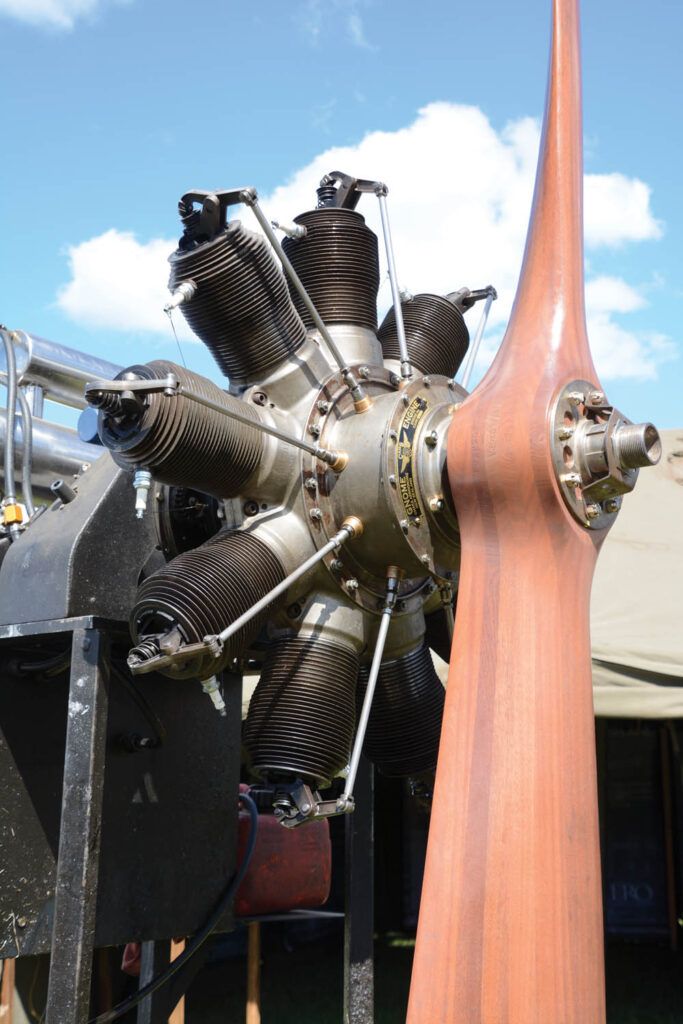
The in-cylinder motion is further aided by CAM’s fuel pump (the originals relied strictly on gravity). Purists may decry it, but CAM also has an electric starter for their rotary—it must be the first non-hand-propped rotary ever—but the engine runs cleaner and smoother than ever and CAM has raised its power rating another 5 hp to a muscular 125 hp and nearly 600 pound-feet of torque while whirling at just 1120 rpm.
The CAM story is augmented by Kip Aero in Dallas, Texas. Kip Aero offers their own line of uber-authentic continuation WW-I Sopwith airframes using the CAM rotary and works very closely with the New Zealand firm. In 2022 Kip Aero developed a much easier spark plug wire (and it’s just a bare wire) attachment to speed plug changes. This was necessary because new spark plugs are used for every flight(!).
Motorstar NA
Probably the most piston power you can buy, few homebuilts can take all the muscle a 621-cubic-inch M14P radial can dish out. But hang-on-the-prop sport pilots sometimes need all they can get. For them, the Romanian-built M14P provides the huge torque and long-prop compatibility they’re looking for.
A venerable design, the M14P is still well supported in Romania and through dealers in the U.S. New engines built from NOS parts are available but no one buys them short of third-world governments due to cost. Instead, the M14P market is an overhaul market, which is where Coy Aircraft Sales in Swanton, Vermont, comes in as they are also the M14P distributor for Motorstar NA. They offer a $23,000 flat overhaul rate on these engines. All work is done at the Romanian factory, so the price includes all rebuild work, test run and warranty, but not shipping. Coy says air freight is currently an elevated $4000 round trip to the factory, but this changes with the worldwide logistics situation (currently a mess).
Typically, when an M14P is overhauled it goes from the base 360-hp to the 400-hp M14PF upgrade as the price isn’t that much greater. Another option is dressing the rebuild for use in Nanchang CJ-6s with their different plumbing. Other sources for these robust Russian-designed radials are Jill Gemerzke’s M-14P Inc. in Kingman, Arizona, and Barrett Performance Engines in Tulsa, Oklahoma, which specializes in hot-rod versions with electronic ignition and Airflow Performance fuel injection.
Rotec Aerosport
Rotec radials are naturals for those wanting the vintage round-motor look in light aircraft. The Australian company offers two nearly identical radials, the smaller R2800 measuring 172 cubic inches and the larger R3600 with 220 cubic inches. These are small- to medium-sized radials so they are a good fit to smaller airframes popular with scale replica builders or light sport aircraft. There are no changes to either engine for 2023.
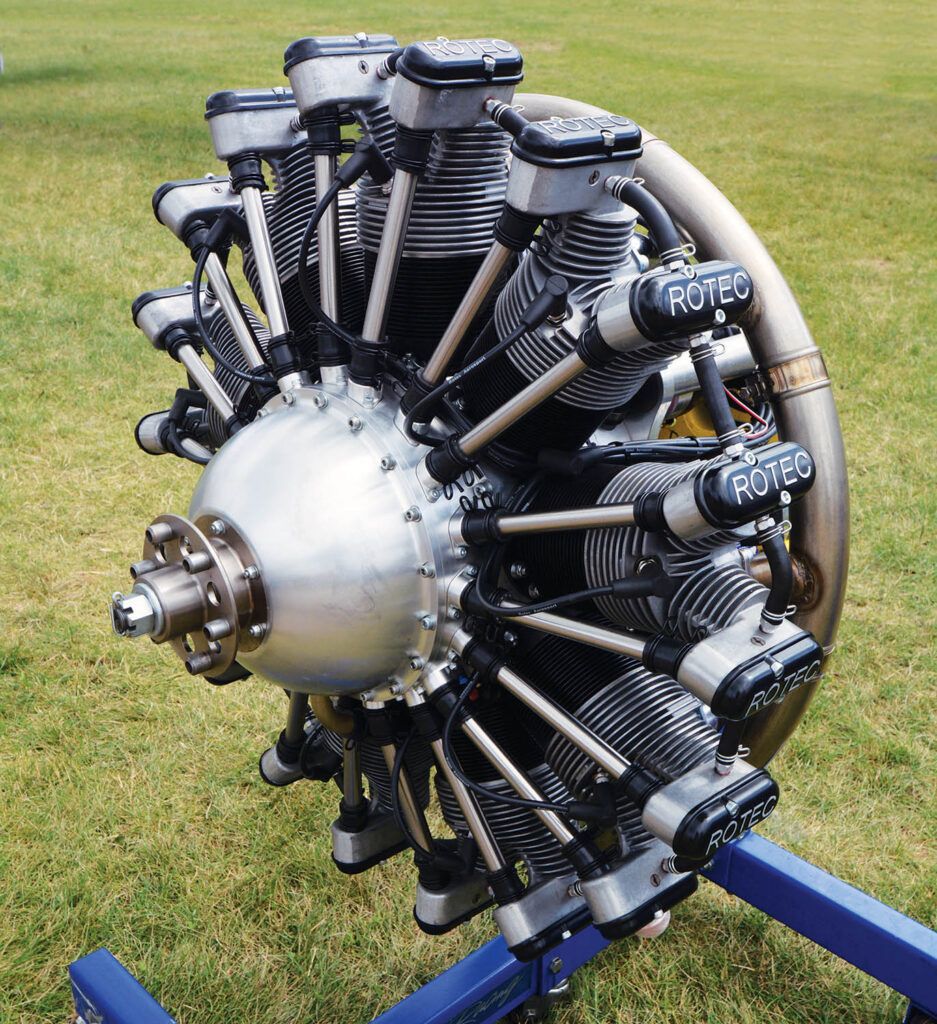
The 110-hp R2800 was released in 1997 and uses seven cylinders; the R3600 employs nine of the same cylinders and was first offered in 2005. It is the better selling version, no doubt because it’s just a little larger and heavier but puts out 150 hp at 2350 propeller rpm (both engines use a 3:2 PSRU gearbox, so that’s 3675 engine rpm). Both are un-supercharged and while the R2800 is well paired with a 76-inch propeller, the R3600 can handle 90-inch props. Because the Rotec is fitted with a collected exhaust with two outlets, the combination of higher rpm and collected exhaust results in a smooth, medium-tone exhaust note similar to a small V-8 turning cruise rpm.
Standard Rotec induction is a simple Bing slide carburetor, but Rotec’s own—and still simple—TBI Mk 2 throttle-body fuel injection is optional. Its main attraction is staying on the job during aerobatics. Besides fitments for their radials, Rotec offers versions of their carburetor for everything from VW conversions to Rotax, Jabiru and even Lycomings.
Like all radials, the Rotec scavenges oil to a remote tank and Rotec offers fabrication of such oil tanks to fit customer aircraft as an optional extra. After 25 years on the market, the Rotec has been mated to a large number of airframes, so it’s worth checking with Australia about a tank before assuming you’ll have to fabricate your own.
Rotec sells direct, so it’s necessary to plan ahead to account for shipping time even under normal conditions. With the snaggled shipping environment these days even more time is necessary. Normally Rotec estimates $600 to ship an engine to the U.S. Furthermore, the dollar exchange rate can strongly affect these Australian engines, as evidenced by a limited-time 20% off sale at the end of 2022 and reflected in our specification table. Who knows how long that will last, but the strong dollar should help keep Rotecs affordable.
Verner Motor
Czech engine maker Verner Motor is relatively new, starting production in 1993, making radials only since 2011 and is newer yet to the U.S. market. Yet they’ve had a great start, with their generous-displacement, slow-turning, non-geared radials offering the sort of long prop, deep rumbling that makes all round-motor fans a little weak in the knees. A good customer service reputation and help with installations hasn’t hurt, either.
For 2023 Verner’s good news is their two smaller Scarlett 3V and 5V engines have returned to production after their COVID-forced hiatus. At our deadline they were building a batch of the little 3Vs (build to order is the norm) and have been offering a $500 discount on those. These engines are especially popular with Legal Eagle XL builders.
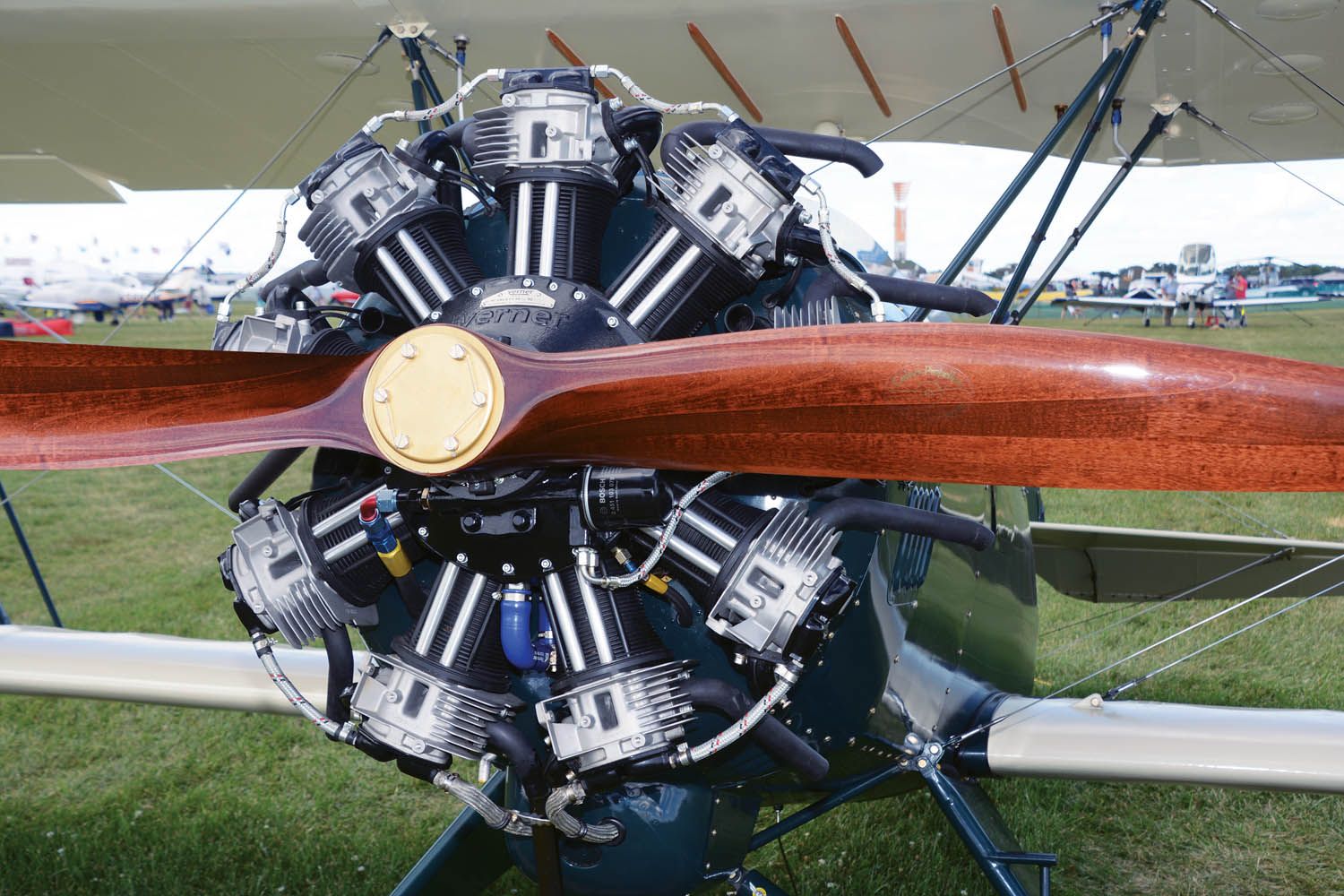
More laterally, all Verner engines are switching from magnesium to aluminum cases. This change was forced when the foundry pouring the early magnesium cases went out of business (after 75 years building aircraft parts) during COVID and no other facility would pour magnesium for anywhere near the same price, even though Verner has use of the existing tooling. This means a slight weight gain—estimated at no more than 12 pounds on the largest nine-cylinder engine—but the Verners remain light engines. Almost too light, say the WW-I replica builders, as their airframes were designed around huge displacement rotaries that easily out-weigh the Verners.
So the full Verner line returns, including five radials ranging from three to nine cylinders. All use the same two-valve, 3.62×4.02-inch cylinder, but fit five, seven or nine of them as power needs rise. Designed to run on 93-octane U.S. or 95-octane European premium mogas, these Scarlets have a 32-inch diameter and a TBO of 1000 hours. Experience shows some lead fouling on a steady diet of 100LL fuel, but this responds favorably to lead-scavenging additives or simply by running mogas. The TBO is expected to rise as experience is gained with higher-hour Verners. So far the company has sold about 150 engines worldwide.
All engines are now fitted with S&S Super G carburetors, the optional fuel injection system being set aside the last two years. Customers flying at higher altitudes typically specify a Marvel-Schebler carburetor from Verner to obtain a conventional mixture control. The Harley Davidson oriented Super G carburetor is automatically altitude compensating, which works well up to Denver altitudes, but above that it runs out of adjustability bandwidth. Alternatively, a few customers have made their own custom single-point fuel injection systems, but that’s not a factory option like the Marvel-Schebler.
Aside from the 3V, pricing has risen very little, thanks largely to the aluminum cases. Finally, while Verner sales came to an instant halt at the start of the Russian invasion of Ukraine, they have rebounded since and production has never been hampered by the conflict. Verner’s U.S. dealers are Scaled Birds (also offers interesting replica airframes), Myers Aviation and Brahn Sport Aircraft (extensive design and fabrication capabilities).
| Model | Drive Type | Horsepower | Weight | Price |
|---|---|---|---|---|
| Classic Aero Machining Service | ||||
| Gnome Monosoupape | rotary | 125 hp @ 1125 rpm | 260 lb with oil pump, air pump, ignition | $62,000 |
| Gnome Monosoupape | rotary | 125 hp @ 1125 rpm | 270 lb with oil pump, air pump, ignition, starter | $65,400 |
| Motorstar NA | ||||
| M14P | geared | 360 hp @ 2900 rpm | 515 lb w/ air or electric start, B&C alternator | $52,000 |
| M14PF | geared | 400 hp @ 2900 rpm | 515 lb w/ air or electric start, B&C alternator | 55000 ($28K – $32K reman, $23K rebuild w/ core) |
| Rotec Aerosport Pty Ltd | ||||
| R-2800 | geared | 110 hp @ 3600 rpm | 224 lb w/ starter, alternator, carb, ignition, exhaust | $16,250 |
| R-3600 | geared | 150 hp @ 3600 rpm | 275 lb w/ starter, alternator, carb, ignition, exhaust | $19,799 |
| Verner Motor | ||||
| Scarlett Radial 3V, 100cib (sales hold) | direct | 42 hp @ 2500 rpm | 86 lb w/ starter, alternator, carb, ignition | $8,800 |
| Scarlett Radial 5V, 166ci (sales hold) | direct | 60 hp @ 2300 rpm | 119 lb w/ starter, alternator, carb, ignition | $11,500 |
| Scarlett Radial 5S, 207ci (sales hold) | direct | 83 hp @ 2200 rpm | 152 lb w/ starter, alternator, EFI, ignition | $16,600 |
| Scarlett Radial 7U, 290ci | direct | 124 hp @ 2300 rpm | 183 lb w/ starter, alternator, EFI, ignition | $21,840 |
| Scarlett Radial 9S, 372ci | direct | 158 hp @ 2400 rpm | 238 lb w/ starter, alternator, EFI, ignition | $27,500 |

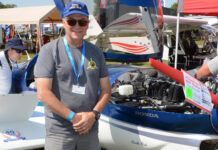
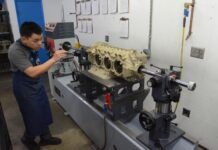
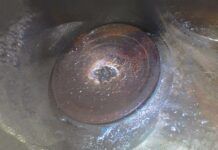

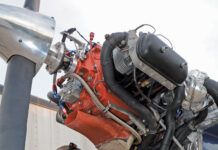
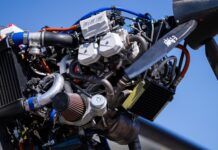
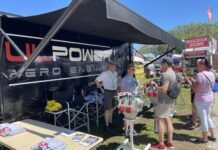
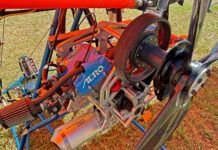
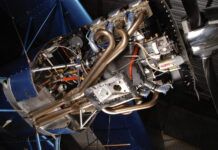
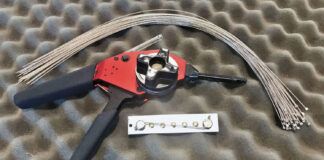

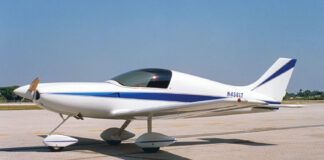
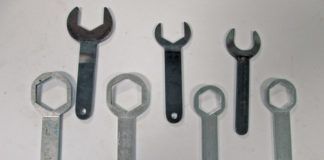
I did not notice the Belgium UL engines. Do you have any word on the UL 520T? What would be very handy is a comparison of engines based on reliability and safety..
ULPower is here: https://www.kitplanes.com/flat-four-stroke-gasoline-engine-buyers-guide-2023/
Disappointed once again, that there is no mention of the Yamaha Apex 4-cylinder and Nytro and Sidewinder 3-cylinder conversions currently being offered by companies like Edge Performance and BD Turnkey Systems. They are viable powerplants when combined with a Skytrax gearbox and are quickly proving their longevity and versatility in the aviation world.